
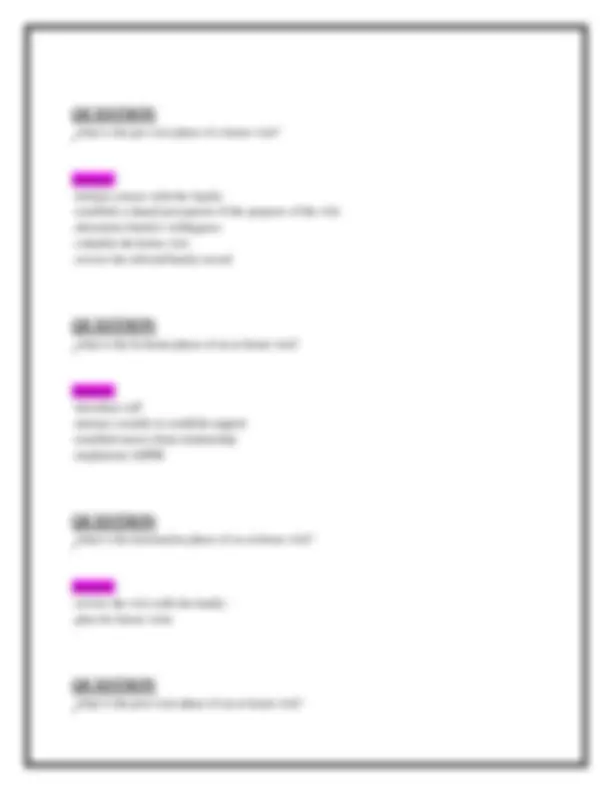
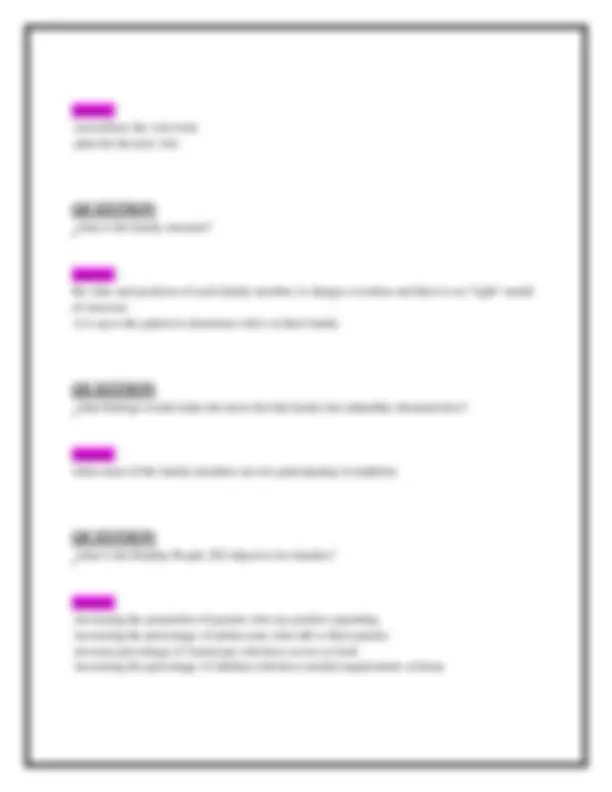
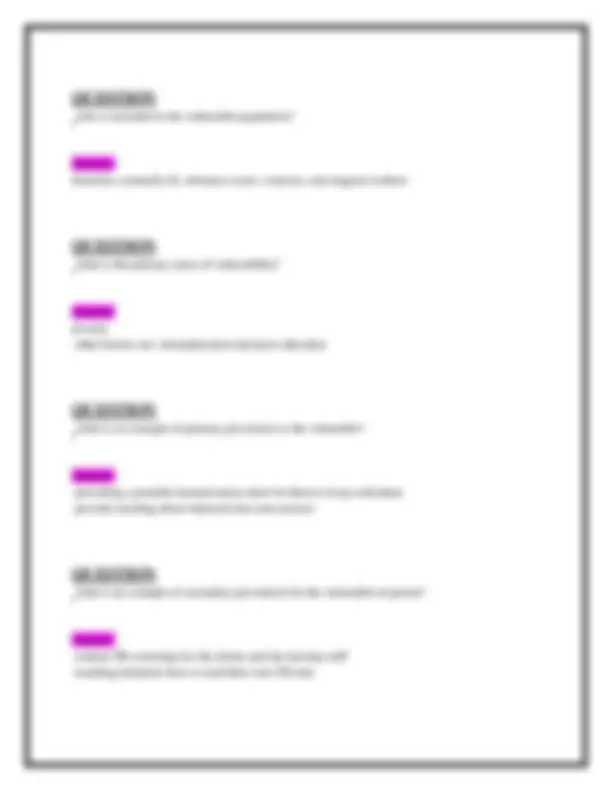
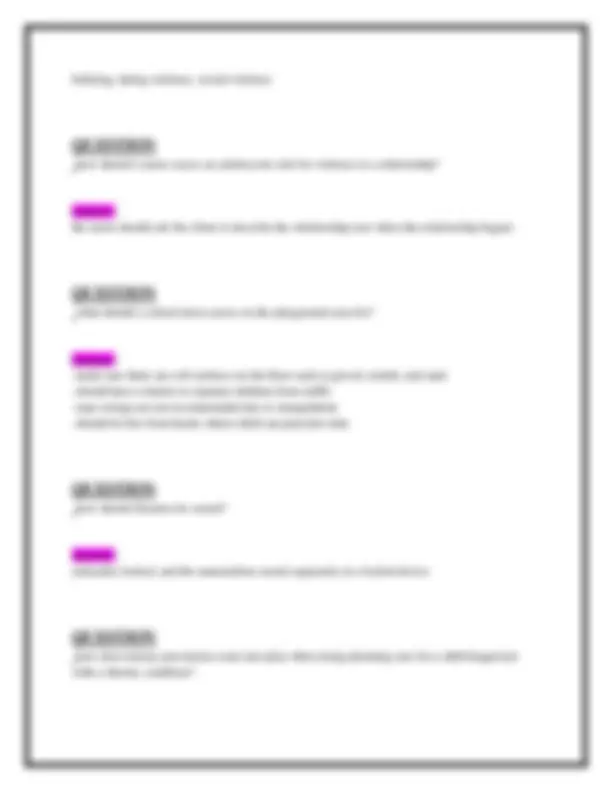
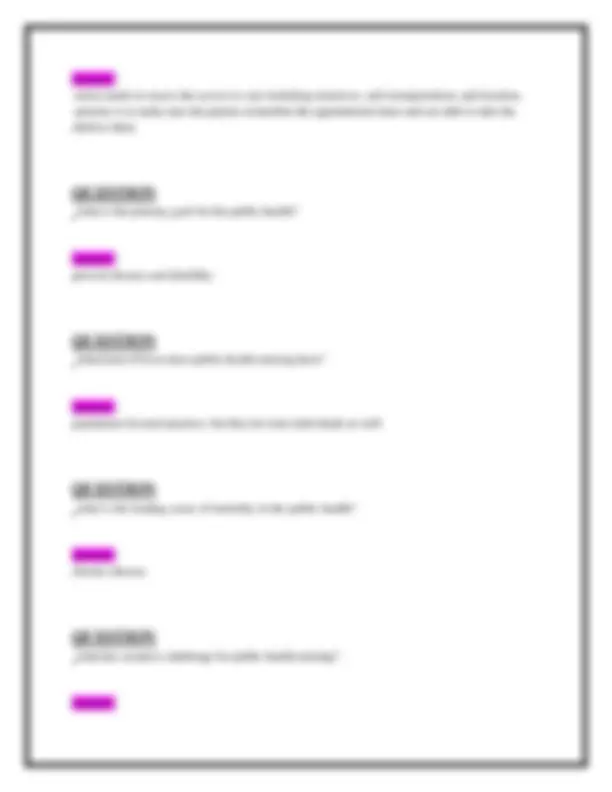
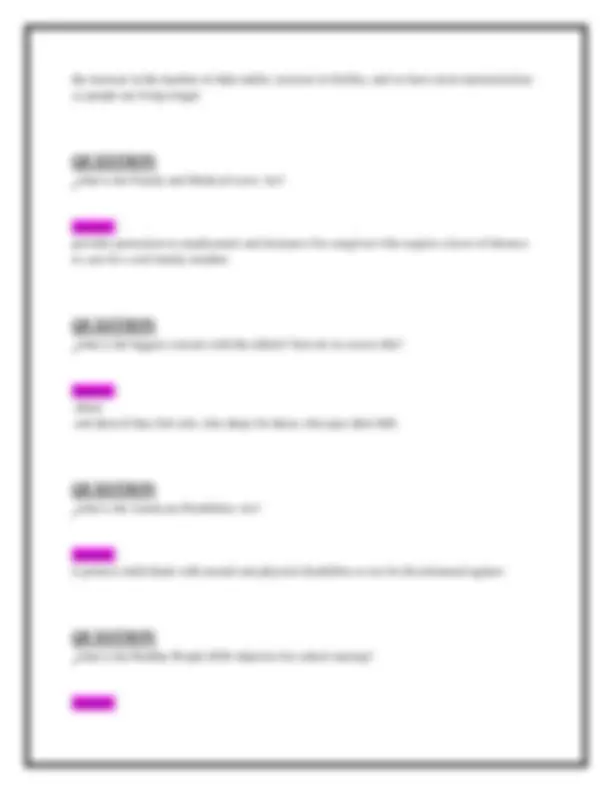
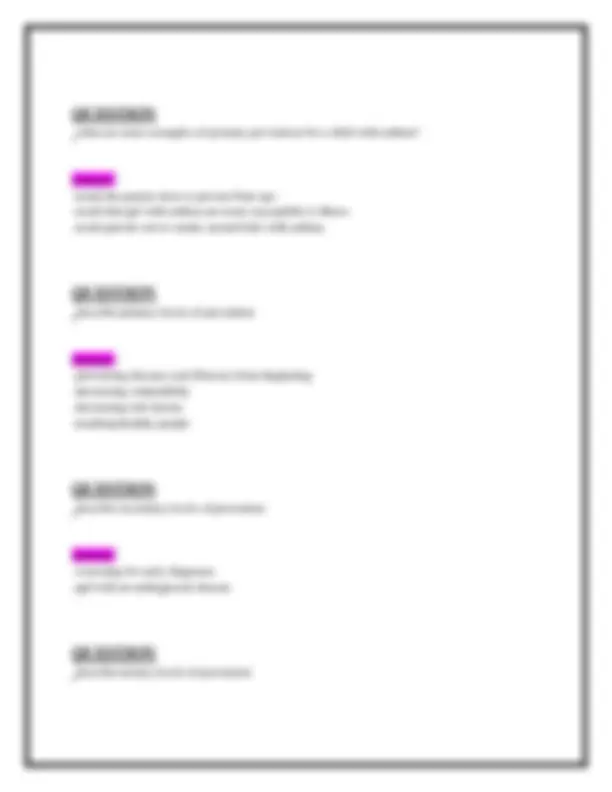
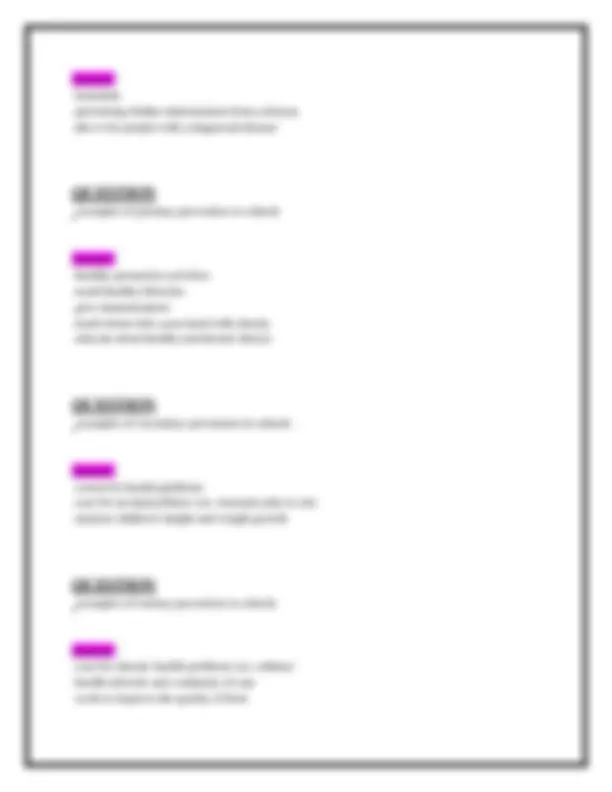



Study with the several resources on Docsity

Earn points by helping other students or get them with a premium plan


Prepare for your exams
Study with the several resources on Docsity

Earn points to download
Earn points by helping other students or get them with a premium plan
Community
Ask the community for help and clear up your study doubts
Discover the best universities in your country according to Docsity users
Free resources
Download our free guides on studying techniques, anxiety management strategies, and thesis advice from Docsity tutors
Exam 1: NUR206/ NUR 206 (New 2025/ 2026 Update) Community Nursing Concepts | Review with Questions and Verified Answers| 100% Correct| A Grade – Fortis
Typology: Exams
1 / 15

This page cannot be seen from the preview
Don't miss anything!










what is the primary focus of community based nursing? Answer: the care of ill individuals and families across lifespans
what is a family crisis? how to know when this is occurring? Answer:
what is a genome? Answer: this tells the provider about the patients genetic makeup, the conditions that run in the family (ex: diabetes, heart problems, high cholesterol, obesity, ect.)
What are ecomaps? Answer: provide information about the patients environment, the family's interactions socially with other groups and organizations
what do home visits assess? Answer: they assess healthcare needs, identify health promotion interventions, and provide skilled care
what priority things must a nurse do to evaluate a family to get the information they need at a home visit? Answer:
what is the initiation phase of a home visit? Answer:
Answer:
what is the family structure? Answer: the roles and positions of each family member, it changes overtime and there is no "right" model of structure
what findings would make the nurse feel the family has unhealthy characteristics? Answer: when some of the family members are not participating in traditions
what is the Healthy People 202 objective for families? Answer:
who is included in the vulnerable population? Answer: homeless, mentally ill, substance users, veterans, and migrant workers
what is the primary cause of vulnerability? Answer: poverty
what is an example of primary prevention to the vulnerable? Answer:
what is an example of secondary prevention for the vulnerable in prison? Answer:
Founder of public health nursing thought you must treat social and economic problems not just take care of the sick
Mary Breckinridge Answer: Established the Frontier Nursing Service- pioneer nurse/midwifery
Flornece Nightingale Answer: Founder of modern nursing also known as the lady with the lamp
what are risk factors for SIDS? Answer: prone or side lying position, sleeping on soft surfaces, smoking during pregnancy, overheating, late/no prenatal care, young maternal age, preterm birth, male gender
what are the leading causes of morbidity and mortality for adolescents according to Healthy People 2020? Answer:
bullying, dating violence, sexual violence
how should a nurse assess an adolescents risk for violence in a relationship? Answer: the nurse should ask the client to describe the relationship (not when the relationship began)
what should a school nurse assess on the playground area for? Answer:
how should firearms be stored? Answer: unloaded, locked, and the ammunition stored separately in a locked device
how does tertiary prevention come into play when doing planning care for a child diagnosed with a chronic condition?
the increase in the number of older adults, increase in fertility, and we have more immunizations so people are living longer
what is the Family and Medical Leave Act? Answer: provides protection to employment and insurance for caregivers who require a leave of absence to care for a sick family member
what is the biggest concern with the elderly? how do we assess this? Answer:
what is the American Disabilities Act? Answer: it protects individuals with mental and physical disabilities to not be discriminated against
what is the Healthy People 2020 objective for school nursing? Answer:
the reduce the number of missed school days with students with chronic asthma
what is the focus of the Frontier Nursing Service? Answer: focuses on vaccinations, infant mortality rates, and access to health care in rural areas
what does the Institute of Medicine focus on? Answer: the development of policy that impacts overall public health
what does the NCHS focus on? Answer: data collection related to population demographics
what do community Oriented nurses assess? Answer: they assess the healthier clients, they go over their risk factors and how to help with them
what are some examples of primary prevention for a child with asthma? Answer:
describe primary levels of prevention Answer:
describe secondary levels of prevention Answer:
describe tertiary levels of prevention
Answer:
examples of primary prevention in schools Answer:
examples of secondary prevention in schools Answer:
examples of tertiary prevention in schools Answer: